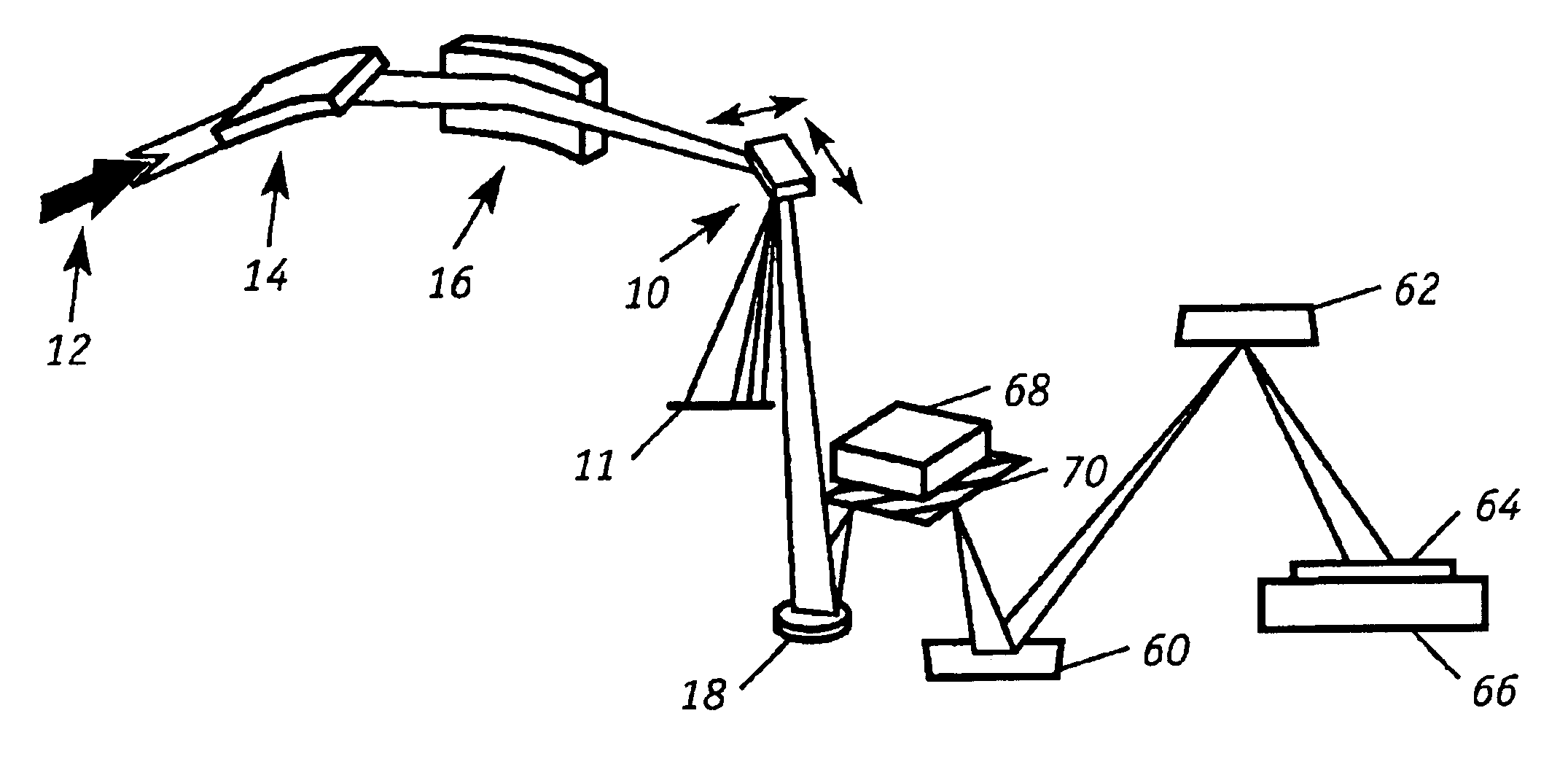Holographic illuminator for synchrotron-based projection lithography systems
a technology of holographic illumination and projection lithography, which is applied in the field of microelectronics, can solve the problems of increasing the scattering angle significantly above the angle, incoherent light at a particular illumination angle with respect to light at all other illumination angles, and the conventional method of fabricating euv diffusers, etc., to reduce the potential high-angle scattering and multi-layer reflectivity loss problems, reduce the scattering angle, and eliminate the intrinsic roughness
- Summary
- Abstract
- Description
- Claims
- Application Information
AI Technical Summary
Benefits of technology
Problems solved by technology
Method used
Image
Examples
Embodiment Construction
[0029]FIG. 1 shows a schematic of the preferred embodiment of the illuminator wherein an effectively coherent synchrotron radiation beam 12 is delivered to moving holographic diffuser 10 by way of conventional beamline optics 14,16. The moving holographic diffuser redirects the beam towards relay mirror 18. As shown in FIG. 2, the movement of holographic diffuser 10 can be controlled by translation mechanisms 20, 22 such that the holographic diffuser 10 is able to be translated linearly in the plane of the holographic surface. The speed of this translation should be rapid enough such that many, preferably about 1000 or more, correlation lengths of the holographic diffuser are spanned during the imaging systems exposure, or integration, time. These translation mechanisms could consist of commercially available x-y stages. For a typical EUV application with a 0.20 numerical aperture projection lithography optic (resolution approximately 40 nm), a desired partial coherence (sigma) of 0...
PUM
 Login to View More
Login to View More Abstract
Description
Claims
Application Information
 Login to View More
Login to View More - R&D
- Intellectual Property
- Life Sciences
- Materials
- Tech Scout
- Unparalleled Data Quality
- Higher Quality Content
- 60% Fewer Hallucinations
Browse by: Latest US Patents, China's latest patents, Technical Efficacy Thesaurus, Application Domain, Technology Topic, Popular Technical Reports.
© 2025 PatSnap. All rights reserved.Legal|Privacy policy|Modern Slavery Act Transparency Statement|Sitemap|About US| Contact US: help@patsnap.com



